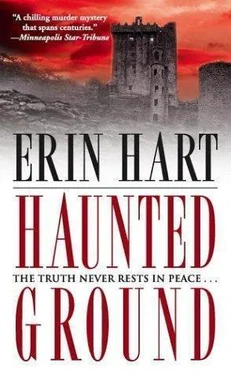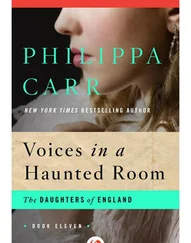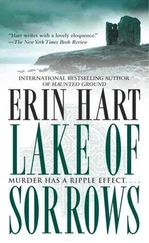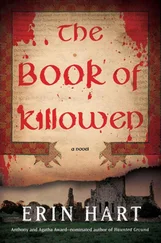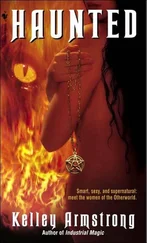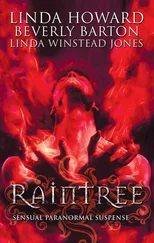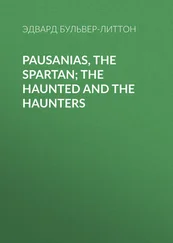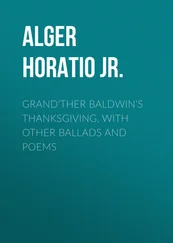“I’ve never been big on pseudo—thatched cottage tourism,” he continued, on the way up the stairs. “Such a blatant swindle, all of it, and not even necessary. I’m convinced that most people would be interested in a more honest approach to the history and culture of a place, if you’d give them half a chance.”
In his library, Hugh Osborne unrolled a rather unwieldy blueprint across his desk. “This first drawing is the priory and grounds as they exist now. Here’s the area we’re planning to develop. The priory itself was excavated about six years ago, and is actually maintained by Duchas—the Heritage Service. But recent gradiometer and magnetometer readings show areas of disturbed soil here. They’re well outside the newer priory enclosure, but very near where we’d planned to put the new buildings. That’s what we need to take a look at before we can put in the gas and electric lines to the site.” Cormac was studying the irregular shapes on the drawing, evidently trying to decipher what they could mean.
“This drawing,” Osborne said, pulling a second plan from beneath the first, “shows the existing priory, and the new workshop buildings in the adjacent field. We’ll have room for three potters along the west wall, with a kiln here in the northwest corner; metal, glass, and woodworkers here on the southern wall; and weaving studios and dyeworks along the east. The whole complex will generate its own power with solar panels and a wind turbine. Half of this larger building has been designated as a shop for the artists, and the other half as an open public space, where we can serve food but also hold meetings and lectures, or concerts, that sort of thing. We hope to add an interpretive element that will explain the site’s archaeology, and eventually a separate interpretive center focusing on the nearby bog habitat.”
“I understand there’s some controversy about Drumcleggan,” Cormac said. “I’ve seen all sorts of signs posted along the road. Anything we should be concerned about?”
Hugh Osborne sighed. “I hope not. Drumcleggan has just been designated as a Special Area of Conservation, to bring us in line with other countries in the European Community. Essentially, that means turf-cutting isn’t going to be allowed for much longer. Machine cutting is already banned outright. People around here have always relied on turf for fuel, and it’s almost impossible to get them to think about the long-term impact that has on the environment. The government have recently exempted people who hand-cut turf for their own domestic use for another ten years, but it hasn’t really assuaged any fears. Those signs have been posted all over the place.”
“A sort of citizens’ protest?” Cormac asked.
“I suppose. There’s been a whole lot of rumor and speculation, and claims that some boundaries have been changed to suit developers, myself included.”
“And have they?” Nora’s question was a bit blunter than she’d intended, but Osborne didn’t appear to take offense.
“No,” he said, “but tempers are a bit frayed. People around here are sensitive about outsiders telling them what they can and cannot do—and it’s understandable enough, I suppose, given their history.”
“What does Drumcleggan actually mean?” Nora asked.
“‘Ridge of the skull,’” Cormac said.
“Right,” said Osborne, observing Cormac with the eager anticipation of a man whose obsession has found its way into conversation by happy accident. “Are you interested in place-names?”
“Interested, but not very knowledgeable, I’m afraid.”
“It’s my main area of study, so I’m liable to get carried away. I’ll endeavor not to bore you too often on the subject.”
“I’d enjoy hearing more about it,” Cormac said. “I don’t suppose there’s very much historical information on the priory itself.”
“Not as much as I’d like. The existing buildings date from the twelfth century. Its most recent incarnation was the family chapel, but there was a fire in 1660, and it was never rebuilt. I have a copy of the old report on file at Duchas. You can have a look through it if you like.” He dug a thick manuscript from a drawer and passed it to Nora.
Nothing remains of the first monastery founded here by Saint Dalach, who died around 809. Some time after 1140, the O’Flaherty family founded a priory for the Augustinian Canons for whom the existing church was built in the late 12th or early 13th century, one of several Augustinian houses in the area. After a disastrous fire in 1404, the priory was restored on a much grander scale. By the mid 15th century the monastery had become corrupt, and in 1443, the Pope took the priory under his protection. The monastery was dissolved around 1540, but the Augustinian friars returned in 1632 when they subdivided the church, and remained until 1650. A fire in 1660 destroyed the newer complex. There is a fine west doorway inserted in 1471 showing Saint Michael, Saint John, Saint Catherine, and Saint Augustine. Other notable fifteenth-century features include a vaulted rood screen, east window, and portion of the cloister arcade.
“You know, if you don’t mind,” Cormac said, “I think I should fetch down my own maps. I won’t be a minute.”
“Great enthusiasm for his work,” Hugh Osborne said to Nora when they were alone.
“He has that.”
“Listen, if you’d like to turn in, do, by all means—don’t feel as if you’ve got to stay here.”
“I’m fine.”
“It’s just that we really should go over these drawings if he’s planning to begin first thing in the morning.”
“No, it’s actually very interesting…” Nora said, her voice trailing off as her gaze fell upon a silver-framed photograph of a dark-haired woman and child on the table behind Osborne’s desk. The woman’s coffee-colored skin, dark hair, and sloe eyes were reiterated in the features of the child she held facing her. One of the baby’s chubby hands reached out to touch his mother’s face. Hugh Osborne evidently registered the picture’s effect, because when Nora raised her eyes, his frankly wary look told her he knew everything she’d heard about him. “Yes,” he said. “My wife and son.”
Nora searched for the hint of a rebuttal in his eyes, and found none. They both looked away. She knew that her own countenance too often betrayed what she was feeling. What had he seen in her eyes? She suspected that in future she and Hugh Osborne would observe a polite but measured distance, like two magnets repelled by opposing poles. What exactly had she gotten herself and Cormac into here? Why had she ever considered it an acceptable idea to stay in this man’s home?
“Well, we’re very lucky,” Cormac said as he returned with the oversized map book. “There’s quite a lot of detail for this area.” He stopped short when he saw them. “Have I missed something?”
“I was actually just saying good night. I think I’m going to turn in early.” Cormac looked startled, but said nothing.
“The stairs are just to your left through the next room,” Hugh Osborne said. “I trust you can find your way.”
“I’m sure I can,” Nora said. She left the library feeling not a little disconcerted at the way the scene there had played out, and the way she’d reacted to Osborne’s statement. What should she have said? “I’m sorry”? What words could possibly be appropriate in addressing a bereft husband who was also the prime suspect in his wife’s disappearance? The paneled door to her left was dark and heavy, with an ornate iron latch that did not move until she applied all her weight to pull it down hard. The hinges were badly in need of oil. She found herself not in the front foyer, but in another, narrower hallway, paneled with dark wood and dimly lit. This couldn’t be right—it wasn’t at all like the way they’d come up from the kitchen. Nora tried a door to her right, which led into a dining room furnished with a Baroque-looking table and sideboard, ornately carved with the leering faces of fauns and nymphs. The evening light was completely gone now, and in the gloom, the faces that peered out from the carved wood seemed to take malicious delight in her discomfort. She proceeded cautiously through the room to the next closed door, but when she turned one huge handle with both hands and pushed, nothing happened. She could simply retrace her steps, but that meant crossing the roomful of faces again, and besides, she’d be damned before she’d go back into that library to ask for directions. This was ridiculous. She turned and pushed once more with all her might, and at last the door gave, and sent her stumbling forward.
Читать дальше
